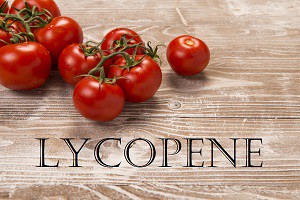Written by Marcia J. Egles, MD. Data from the Framingham Offspring Study shows that increased consumption of lycopene is associated with reductions in the risk of coronary heart disease.
 Researchers using data from the Framingham Offspring Study (2) have recently shown that increased consumption of lycopene is associated with reductions in the risk of coronary heart disease (1). Lycopene is a type of carotenoid(Beta carotene found in carrots is another carotenoid) found in some red foods such as tomatoes, watermelon and pink grapefruit. Tomato based foods are the most abundant common source of lycopene.
Researchers using data from the Framingham Offspring Study (2) have recently shown that increased consumption of lycopene is associated with reductions in the risk of coronary heart disease (1). Lycopene is a type of carotenoid(Beta carotene found in carrots is another carotenoid) found in some red foods such as tomatoes, watermelon and pink grapefruit. Tomato based foods are the most abundant common source of lycopene.
The Framingham Heart Study is a famous long-term observational study which began in 1948 and medically tracked over 5000 adult residents of Framingham, Massachusetts (3). The Framingham Offspring Study invited the adult children of the original subjects and their spouses, to undergo medical examinations and other follow-up every 3-4 years. Of the eligible 6838 individuals, 5135 volunteered to participate. For the present lycopene study, data was used from the fifth, sixth and seventh study examinations which spanned 1991-2001, with follow-up for cardiovascular disease events through 2008. The incidence of cardiovascular disease in the group for the period included 171 cardiac events such as heart attacks and angina and 99 cases of stroke or transient ischemic attacks. Dietary intakes were tallied using the Harvard semi-quantitative food frequency questionnaire (4).
Many studies have consistently suggested that, in general, those who consume relatively higher amounts of vegetables and fruits tend to have lower rates of cardiovascular disease (4,5). Accumulating evidence from intervention trials has suggested that lycopene may be a factor in providing this protection(6,7,8). These studies have linked higher levels of lycopene measured in the blood to lower risk of cardiovascular disease. However, most studies using only dietary intakes of lycopene, without measurements of lycopene blood levels, have failed to show these beneficial relationships. The present study seeks to rectify this apparent discrepancy.
According to these researchers (1), prior lycopene intake studies may have missed the cardio-protective benefits of lycopene because of difficulties in accurately classifying lycopene intakes. Not only are some lycopene sources omitted on a food frequency questionnaire, but also the manner in which food is eaten and prepared affects the lycopene content and absorption. For example, most food frequency questionnaires would not count the lycopene contribution of ketchup which would be a significant lycopene source in ketchup enthusiasts. Also, lycopene is fat rather than water-soluble. If eaten with fat, lycopene absorption is enhanced. The cheese and oil on the pizza serve to increase the bioavailability of the lycopene in the tomato sauce. Unlike other fragile nutrients, lycopene availability is improved by processes such as cooking, canning and crushing which all tend to release lycopene from the bonds of plant fibers. All these factors tend to complicate the assessment of lycopene intakes.
To address the potential misclassification, the researchers used repeated measures of intake obtained over 10 years to determine the relations between lycopene intake and the incidence of cardiovascular disease. The food questionanaire data was carefully reviewed. While no association was found between lycopene intakes and stroke, risk reduction was shown between lycopene and coronary heart disease. Highest lycopene intakes were associated with up to a 26% reduction in coronary heart disease incidence (Hazard ratio 0.74, 95% confidence interval 0.58, 0.94).
The researchers pointed out that additional studies might determine whether lycopene or other components of tomatoes, are responsible for the observed association of cardiac benefit.
Their work might help tap the wealth of valuable data from established long term studies, like the Framingham Studies, for which blood levels of specific nutrients would not be available.
Source: Jacques, Paul F., Asya Lyass, Joseph M. Massaro, Ramachandran S. Vasan, and Ralph B. D’Agostino Sr. “Relationship of lycopene intake and consumption of tomato products to incident CVD.” British Journal of Nutrition 110, no. 3 (2013): 545-551.
© The Authors 2012
Posted October 8, 2013.
Marcia Egles, MD, graduated from Vanderbilt University School of Medicine in 1986. She completed her residency in Internal Medicine at St. Louis University Hospital. Dr. Egles is certified in Internal Medicine and is a member of the American College of Physicians. She resides in Avon, IN with her husband and two sons.
References:
- Jacques, Paul F. et al, Relationship of lycopene intake and consumption of tomato products to incident CVD. British Journal of Nutrition (2013), 110, 545–551 doi:10.1017/S0007114512005417.
- Feinleib M, Kannel WB, Garrison RJ, et al. (1975) The Framingham Offspring Study. Design and preliminary data. Prev Med 4, 518–525.
- Dawber TR & Kannel WB (1958) An epidemiologic study of heart disease: the Framingham study. Nutr Rev 16, 1–4.
- He FJ, Nowson CA, Lucas M, et al. (2007) Increased consumption of fruit and vegetables is related to a reduced risk of coronary heart disease: meta-analysis of cohort studies. J Hum Hypertens 21, 717–728.
- Dauchet L, Amouyel P, Hercberg S, et al. (2006) Fruit and vegetable consumption and risk of coronary heart disease: a meta-analysis of cohort studies. J Nutr 136, 2588–2593.
- Rissanen TH, Voutilainen S, Nyyssonen K, et al. (2001) Low serum lycopene concentration is associated with an excess incidence of acute coronary events and stroke: the Kuopio Ischaemic Heart Disease Risk Factor Study. Br J Nutr 85, 749–754.
- Sesso HD, Buring JE, Norkus EP, et al. (2004) Plasma lycopene, other carotenoids, and retinol and the risk of cardiovascular disease in women. Am J Clin Nutr 79, 47–53.
- Hak AE, Ma J, Powell CB, et al. (2004) Prospective study of plasma carotenoids and tocopherols in relation to risk of ischemic stroke. Stroke 35, 1584–1588.
